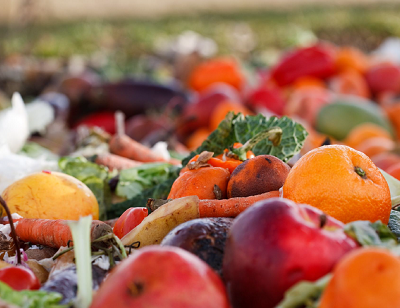State study shows better food waste management could keep more Iowans fed
November 15th, 2025 by Ric Hanson
(A report by the Iowa Capital Dispatch) – An Iowa Department of Natural Resources study on food waste in the state found that Iowans on average, throw away 200 pounds of food each year. The study identified a number of ways that households and businesses can reduce their food waste and in turn, help food insecure households, the environment and the economy. Preventing food waste by producing, buying and serving only what is needed is the best way, according to the study, to reduce food waste. Other methods it identified include donating or upcycling food before it goes bad, feeding it to animals and livestock, composting food scraps or putting them through an anaerobic digestion system and applying the product to the land. Some of these solutions, according to the report, can be implemented in the near future while others have a longer start-up time, or require changes in state and local policies.
DNR determined in a 2022 study of landfill materials that food waste, comprising unsold food from stores, table scraps, uneaten prepared food, kitchen trimmings and byproducts from food and beverage processing facilities, was the number one material in Iowa landfills. The same study found that 19% of landfill material in Iowa is loose or packaged food waste. Of the average 200 pounds of food per year per person that Iowans dispose of at home, 25% is still packaged. When including commercial food waste into the calculation, Iowans dispose of 300 pounds of food waste, per person, per year. The Iowa rate is lower than the average rate for the U.S., which the U.S. Environmental Protection Agency estimates is between 492 to 1,032 pounds per person per year.
EPA also estimates the average family throws away about $3,000 worth of food, or 11% of household food expenditures, annually. Further, the study said food waste emits air pollutants as it sits in solid waste landfills. The best way to reduce food waste that ends up in landfills is to manage the amount of waste in homes and businesses, according to the study, which suggests also, that at home, residents: eat their leftovers, keep track of the items in their refrigerators and pantries, plan meals, be creative with meals to use what is about to spoil, store food properly and purchase in quantities that can be consumed before they spoil. Restaurants can audit their waste streams and adjust their menus, wholesale orders and portion sizes to reduce food waste.
The study points out that while households and commercial businesses throw out food, 1 in 8 Iowans face food insecurity. Food banks and food pantries often receive donations from grocery stores or wholesalers of food that is about to pass its expiration date, which can be one way of reducing food waste. The study surveyed six food-rescue organizations in Iowa, including Food Bank of Iowa, which accepted more 26 million pounds of rescue food in 2023 to be distributed across its 55-county region. The surveyed organizations identified that the majority of this food is able to be used and given out at food pantries, though the process presents some barriers. It’s difficult to always provide culturally relevant foods and some stores are reluctant to donate their food for fear of being held liable for accidentally donating spoiled food.
Based on the information gleaned from the study, DNR recommends the state improve education and training strategies around food donation, establish requirements for certain businesses to donate food and increase tax credits available for donating food. Composting is another strategy for reducing food waste. The study found that in 2024, approximately 2,925 tons of food waste were managed with composting in Iowa. This means, per the study, that most facilities are operating “well below” permitted limits and that the state’s composting capacity is “not being fully utilized.” Surveyed facilities cited permitting, contamination due to the inclusion of non-compostable items like glass or plastic, and cost as the major limiting factors to increasing compost capacity.
Solutions presented by the study include: legislative requirements to compost food for certain businesses, partnerships to purchase or rent composting equipment, grants and incentives to pre-process food waste. Once food scraps are composted, the study found that waste facilities generally do not have a hard time selling the compost to homeowners, businesses and farmers that want to apply the nutrient-rich product to their fields and gardens. Similar to composting, anaerobic digestion also breaks down food scraps into a usable product: biogas. According to the study, some Water Resource Recovery Facilities in Iowa pull organic material from wastewater streams and process it via anaerobic digestion. Of the nine sites surveyed by the study, four use the produced biogas onsite for things like heating boilers and electricity generation, while others sold the biogas.
The study suggests greater development, marketing and procurement of the practice at facilities in the state to help manage food waste. The study points out that composting facilities and wastewater facilities with anaerobic digestion are concentrated to areas of higher population in the state, which means some regions don’t have access to these processes. There are only five composting facilities in Iowa and three water resource recovery facilities that accept food waste.DNR noted that residents and businesses can add smaller compost or anaerobic digestion infrastructure on site or in their backyards to help reduce food waste that ends up in a landfill.
Another solution the study suggested is the implementation of a “sharing table” at schools. This practice has been implemented in other states and allows students to put their un-opened packaged food on a table in the cafeteria to be donated, rather than tossing it in the garbage. The study also called for greater education in schools around food waste, and incentives to businesses that implement food reduction efforts. DNR said it plans to continue to measure food waste in Iowa to “to assess effectiveness of the State’s efforts to reduce food waste.”
The study was funded through an EPA Solid Waste Infrastructure for Recycling grant.





